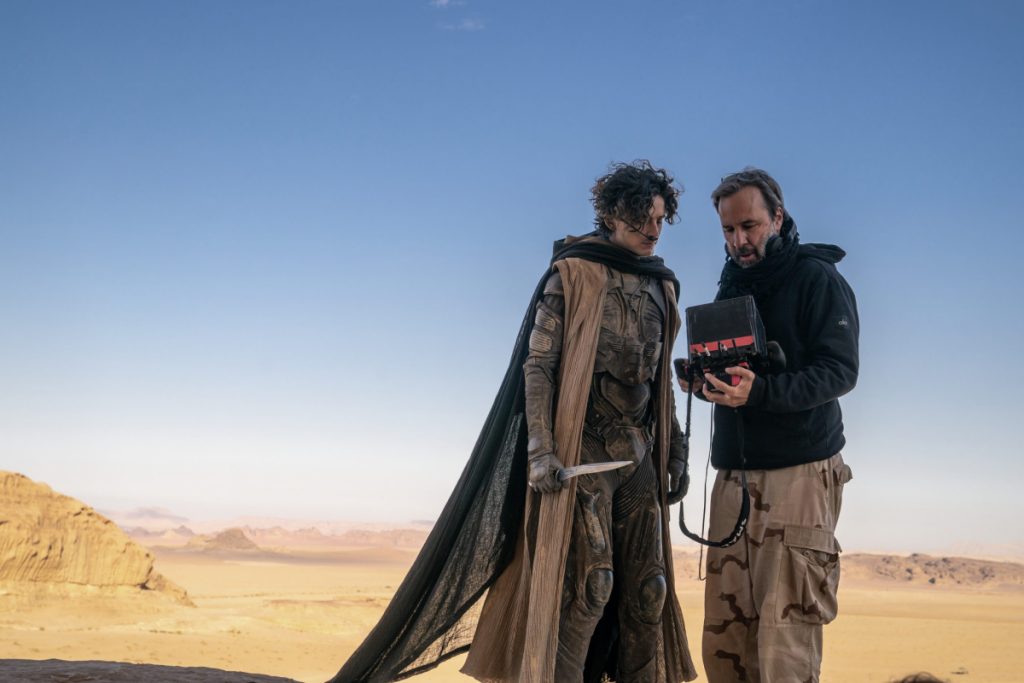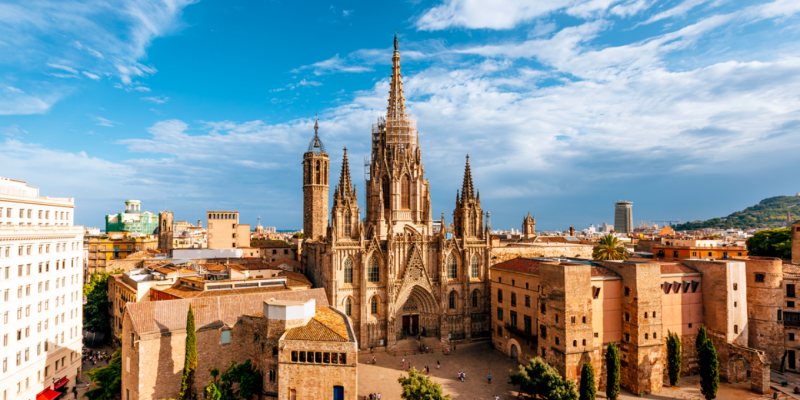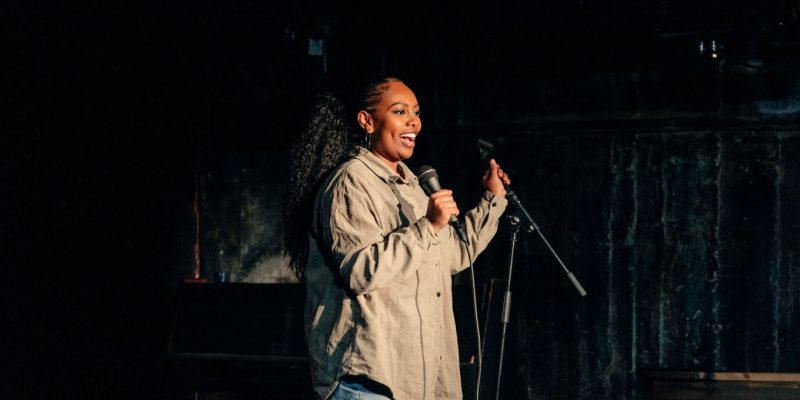Movies & TV
Denis Villeneuve on Dune: Part Two and Working With Timothée Chalamet
We chatted with the French Canadian director at the Montreal premiere of 2024's most-talked about film.
by : Catherine Beauchamp- Mar 4th, 2024

WARNER BROS. PICTURES
Denis, you’ve just returned from a worldwide tour for Dune: Part II and the film is finally out. Is the pressure off?
“Actually, the tour isn’t over yet, because I’m heading back to China, but the fact that I’ve been able to present the film to family and friends here [in Montreal] has been a touching experience. It allows me to share the work that Tanya [Lapointe] and I have been doing for several years with the people I love. Montreal is my home, my source and my breeding ground for creativity. It stays with me. Whenever I’ve made films and haven’t had a premiere in Montreal, there’s always been something missing.”
The reviews are in and they’re rave reviews. I guess that takes some of the pressure off, too.
“Yes. (Laughs) When you make a film, you take everyone in a boat and you hope the boat doesn’t sink. So the fact that the film has been well received by the critics is good news. I’m a big believer in the theatrical experience, and I want to fight for it. I hope to generate a certain enthusiasm among moviegoers.”
You’ve taken certain liberties with the film compared to the novel. Dune fans are very assiduous. Do you think they’ll hold this against you?
“I take full responsibility for the decisions that were made on the film. When you adapt, you transform! The book’s strength lies in its details, descriptions and complexity. Images have a power that words don’t have, but words have a power that images don’t have. Film is a completely different vehicle from writing. My decisions were all inspired by the author of the book, Frank Herbert. I knew exactly the message he wanted to convey with the novels, so my adaptation, I hope, is much more faithful to Frank Herbert than to the book.”
It’s fascinating to see so many young people interested in the Dune films.
“It’s the best news in the world. Not just for me, but for the whole industry. It’s great that filmmakers are starting to attract younger audiences, because young people are the future of cinema.”
 WARNER BROS. PICTURES
WARNER BROS. PICTURESTimothée Chalamet stars as Paul Atreïdes for the second time. He speaks French very well—did you speak French together on the set?
“Very much so! There was a closeness and intimacy that [we] developed through language. To be able to communicate quickly on an English-speaking set, it felt like our secret language. I loved it!”
Chalamet was much younger when you shot the first part of Dune. How did he grow between the first and second films?
“On the first film, he was barely 23. He already had experience as an actor, and immense talent, but he was still an actor who had never been on a production of this magnitude. He learned many things, like how to protect his concentration and creative space in this huge machine.
When he arrived on the 2nd film, at the age of 28, he was much more grounded, much more solid. He had become a leader. It’s important for the lead actor to set the tone. If it’s someone who’s gracious and welcoming, it creates a whole dynamic on the set.”
Have you noticed this through your experience on set?
“Of course I did! Just the way Timothée spontaneously went up to Austin Butler at the start of the shoot, and he was already friends with Florence Pugh. A sense of community quickly developed between the actors. I knew that Timothée was at the core. He gave space to the others, he didn’t try to play up his ego. He didn’t try to outshine the others. He welcomed them. That’s the mark of a leader.”
When we looked at the images from your world tour on Instagram, the four actors together looked like the Beatles. Austin Butler, Timothée, Zendaya and Florence Pugh, and you looked like George Martin in the back. It’s amazing how popular they are. That must have helped with the film’s promotion.
“(Laughs) It’s no coincidence that we waited until after the actors’ strike to launch the film. I had ‘le cul bordé de nouilles‘, as they say in French. I was lucky to give these roles to young actors who, one after the other, began to explode in the media sphere. Their fame grows with every passing day, and that’s a good thing for the film.”
 WARNER BROS. PICTURES
WARNER BROS. PICTURESWhat changed between Dune: Part One and Two?
“[Dune: Part Two] was more technically complicated. The first film had maybe one scene that was a technical challenge, but in the second part, there were at least six or seven scenes that required research and development. Everyone had to outdo each other to succeed. I didn’t want to compromise, and I was surrounded by people who didn’t want to compromise either. It created a lot of headaches in the shooting schedule and required a lot of concentration.”
Like the scene where Timothée Chalamet rides a sand worm?
“It’s one of the most technically complicated scenes I’ve ever done in my life, and it’s a key scene in the film. I knew that if I didn’t get that scene right, there would be no film. We’re talking about months of work. Parts of the scene are shot in different parts of the world. So it was exhilarating, exhausting technical work, but extremely fun.”
What was it like to work with your partner, Tanya Lapointe?
“I wouldn’t have been able to make the two films without her. She was at the very centre of decisions and operations. She was able to gain the studios’ trust extremely quickly and then carve out her own niche. She’s now a respected producer in Los Angeles. What’s more, she went behind the camera. She was directing on a second unit to help me, because I had to be in two places at the same time. I didn’t want to make any compromises, I needed people to supervise these scenes so that they moved at the same pace. Tanya helped me do that. It was very moving for me to develop a creative complicity with the woman I love. It was one of the most beautiful things in my life as a filmmaker.”
Dune: Part Two is now playing in theatres.
This story originally appeared in ELLE Quebec and was translated from French.
Read more:
Our Favourite Looks from the Dune: Part Two Press Tour
Why Everyone Is Talking About Dune, the Critically Acclaimed Film Starring Zendaya & Timothée Chalamet
Newsletter
Join our mailing list for the latest and biggest in fashion trends, beauty, culture and celebrity.
Read Next

Beauty
The Best Met Gala Beauty Looks Of All Time
From Taylor Swift's 'Bleachella' era to Rihanna's iconic 2011 braids, meet the best beauty moments in Met Gala history.
by : Katie Withington- Apr 26th, 2024

Culture
Benny Blanco Says He Fell in Love With Selena Gomez Without ‘Even Noticing’ It
Allow Benny Blanco to tell the straight-from-a-rom-com story of how he realized his feelings for his girlfriend and longtime friend.
by : Alyssa Bailey- Apr 26th, 2024

Beauty
Summer Prep: How to Feel Confident in Your Swimsuit
New Size-Inclusive Swimwear: Gillette Venus partners with The Saltwater Collective to Launch a Collection for Any Body
by : ELLE Canada- Apr 24th, 2024




